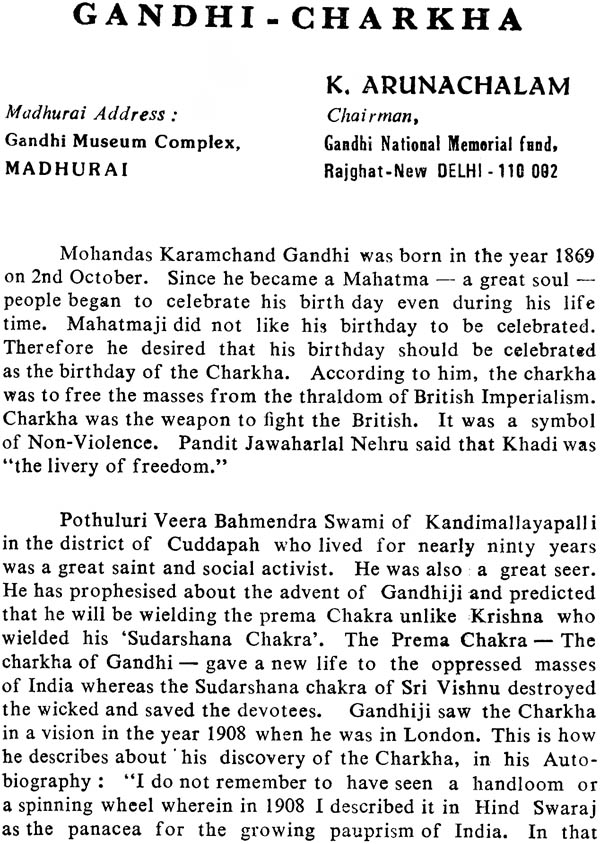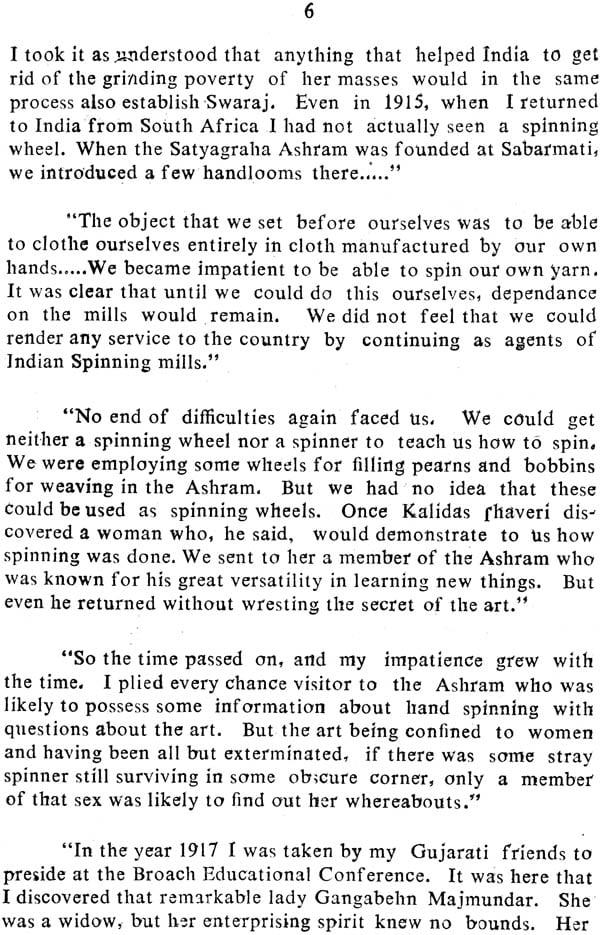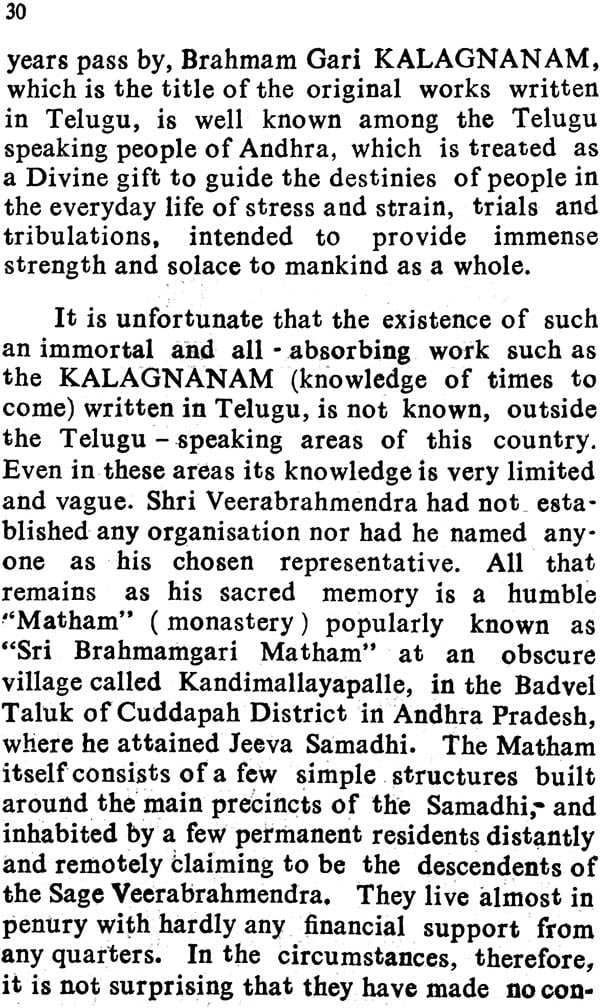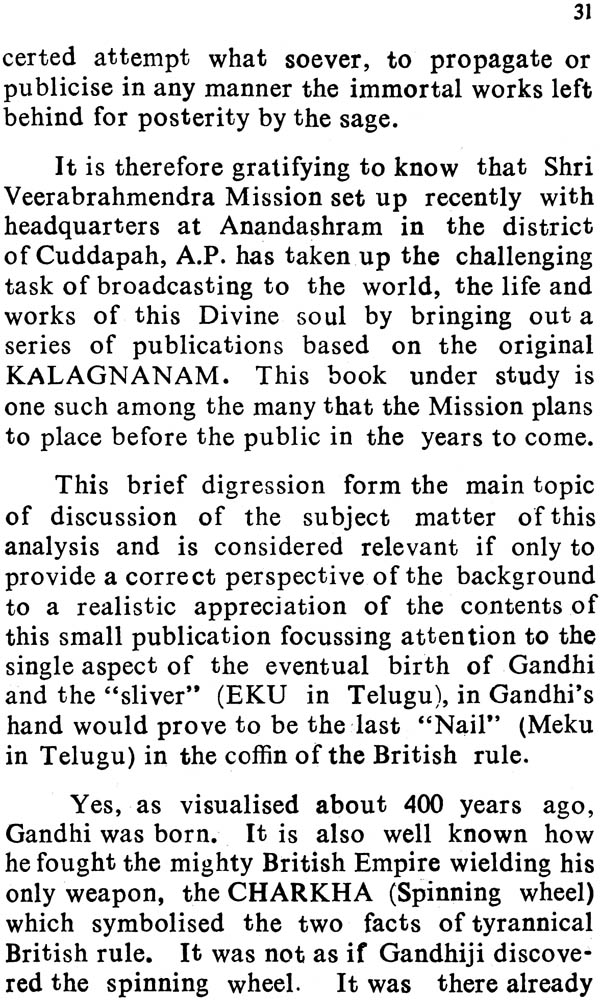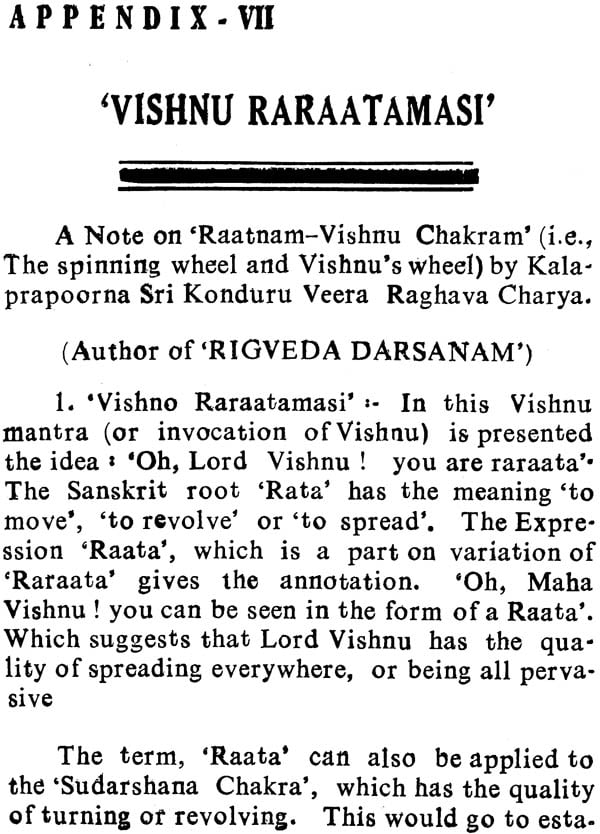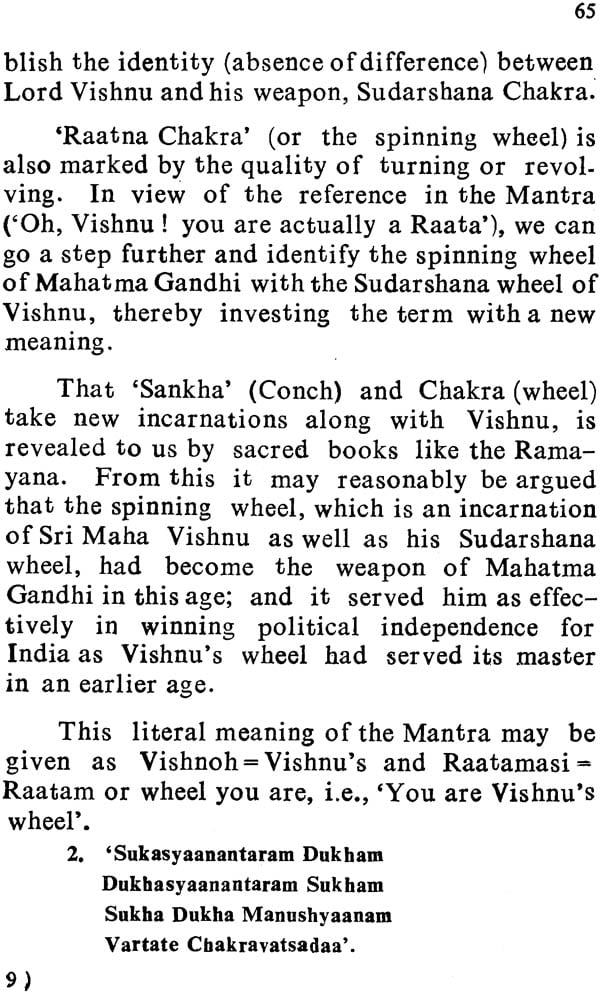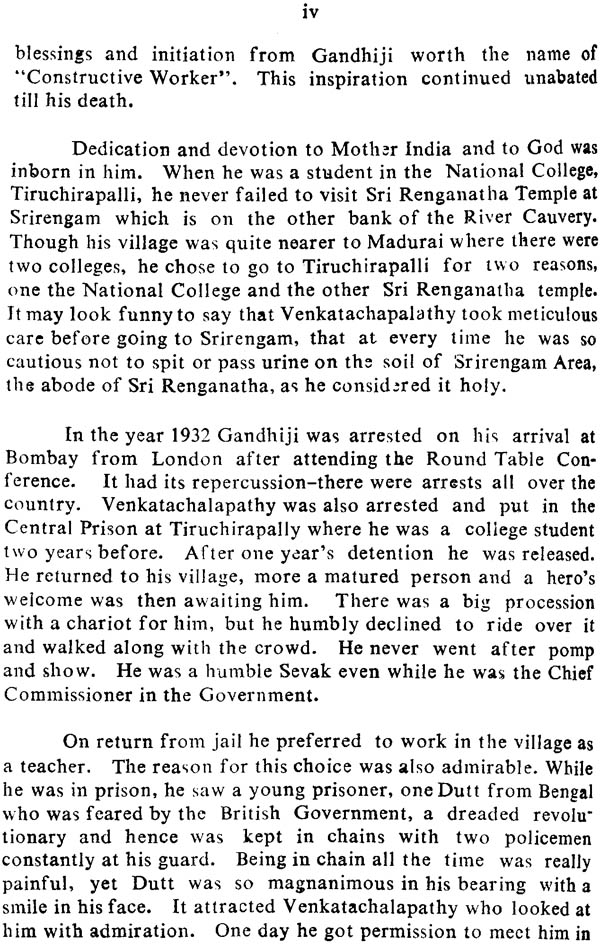
Brahmavani Gandhi-Charkha and Sudarsana Chakra
Book Specification
| Item Code: | NAJ091 |
| Author: | V. Veerabrahmam |
| Publisher: | Tirumala Tirupati Devasthanams, Tirupati |
| Language: | English |
| Edition: | 1989 |
| Pages: | 116 |
| Cover: | Paperback |
| Other Details | 8.5 inch x 5.5 inch |
| Weight | 130 gm |
Book Description
Preface
Sri Veerabrahmendra Mission of Anandashram, Mydu-kuru, Cuddapah Dr. Andhra Pradesh, has brought out many publications, big and small, focussing on the precepts and prophesies of that great 17 th century Andhra saint and seer, popularly and affectionately referred to as Pothuluri Veera-ppayya. The Mission bears his full name.
la these volumes a serious attempt, backed by intense study and research, is made to interpret the mind and soul of the saint in the context of the challenges and compulsions of the present century, Veerappayya, with an uncanny sense of the coming events, predicted many things three hundred years ahead of their occurrence. How he did is a mystery which modern mind will never be able to unravel. The fact remains that he could foresee and foretell the events of the 20 th century, in the 17 th century. Such a remarkable achievement remains almost unprecedented in world history, the only other example of similar prescience being that of the Frenchman Nostradamus of the 16 th century.
Sri Veerabrahmendra Mission, with its Gandhian bias and background, has been making a special study of Veerappayya's predictions which relate to India's freedom struggle in Gandhian phase. Surprisingly, the seer predicted with astounding precision the birth of a bania (Guggilla rayudu) Gandhi by name, in North India and it was also prophesised that tile weapon the child would use for liberating the country from the colonial rule was the incredibly harmless and rudimentary spinning wheel, Char k ha. What further evidence do we need for accepting the perennial relevance of the saint's philosophy which represents a unique blend of spirituality and secularism, humanism and partiotism and earthiness and transendentalism.
The present volume deals with Veerappa yyas phophesy regarding the charkha , Gandhi's premitive, peasant's weapon against the fiercely formidable might of the British imperialism. The idea of Charkha must have been suggested to Veerappayya by Chakra (Sudarsana), Lord Vishnu's unfailing weapon for the destruction of evil. Veerappayya was a great devotee of Sri Ranganathaswami of Sreerangam (Kaveti Ranga) and since the Sudarsana discus could be used only by Lord Vishnu or one of his many manifestations. Veerappayya decided that whatever weapon India's freedom fighters might use had to be circular in shape to derive its power from the Chakra. So Lord Vishnu's Chakra became Charkha in the hands of Gandhi. Veerappayya talks of ekula sliver of cotton) "Gandhi" and thus affirms the ethos of the freedom struggle. Through the medium of Charkha, eku and Gandhi, referred to in the saint's magnum opus, Kalagnanam in Telugu, India won her freedom from the British rule, Veerap, payya describes eku as meku, a nail driven into the coffin of British imprerialism It is significant that Gandhi used char kha and eku not only for achieving political freedom for his country but for consolidating it through economic reconstruction which was possible only through the revitalisation of rural economy. Among Veerappayya's other principles, practices and prophesises with sharp relevance to the Gandhian way of life were A commitment to dignity of labour, harmony between caste's and communities, eradication of the evils of caste system, egalitarians with the emphasis on deep humanism governing the relations between the top dog and the under dog, use of religion, not for spreading blind and obsolete dogmas, but for enabling the people to lead better lives, a through a self imposed moral code, service to God through service to Man etc.
This book is very important because it brings into sharp focus the great 17 th century saint's basic philosophy as it affected India's freedom struggle and Sarvodaya movement. The author, Sri Ummettala Kesava Rao, a highly respected Bhoodan worker, and the translator,' Dr. D. Anjaneyulu, have succeeded in capturing the spirit of the saint's thoughts and precepts in the correct context. Indeed it is very appropriate that this valuable volume is being dedicated to that deeply dedicated pioneer of Sarvodaya in South India, D. Venkatachalapathi who rose from the level of a mere village worker to the exalted position of Chief Commissioner of Rural Development, Government of Madras (undivided province), He brought the benefits of Sarvodaya to the door. step of the villager long before the term was reduced to Gandhian jargon. Temple entry, panchayat raj, prohibition, Khadi, cottage industries, eradication of adult illiteracy, Harijan uplift, emancipation of women through education and employment: Venkatachalapathi involved himself intensely in all these and several related Gandhian programes with devotion, humility and utter self-lessness. Hishighest ambition and programme of action began and ended with service for its own sake at the grass root leval. He had the previlege of working with many national leaders of his day and making a tremendous impact on them through his humility. honesty and hard work.
